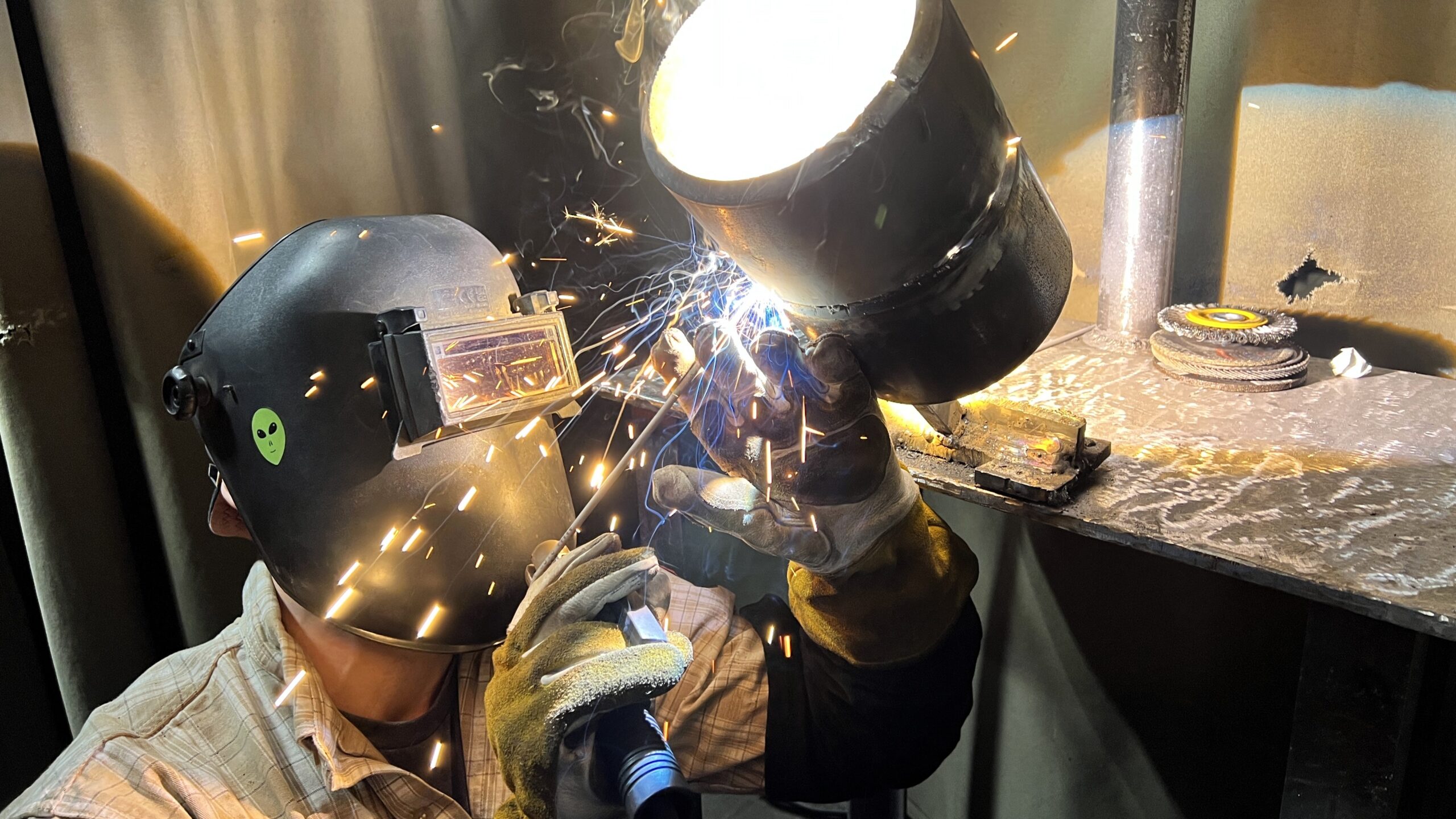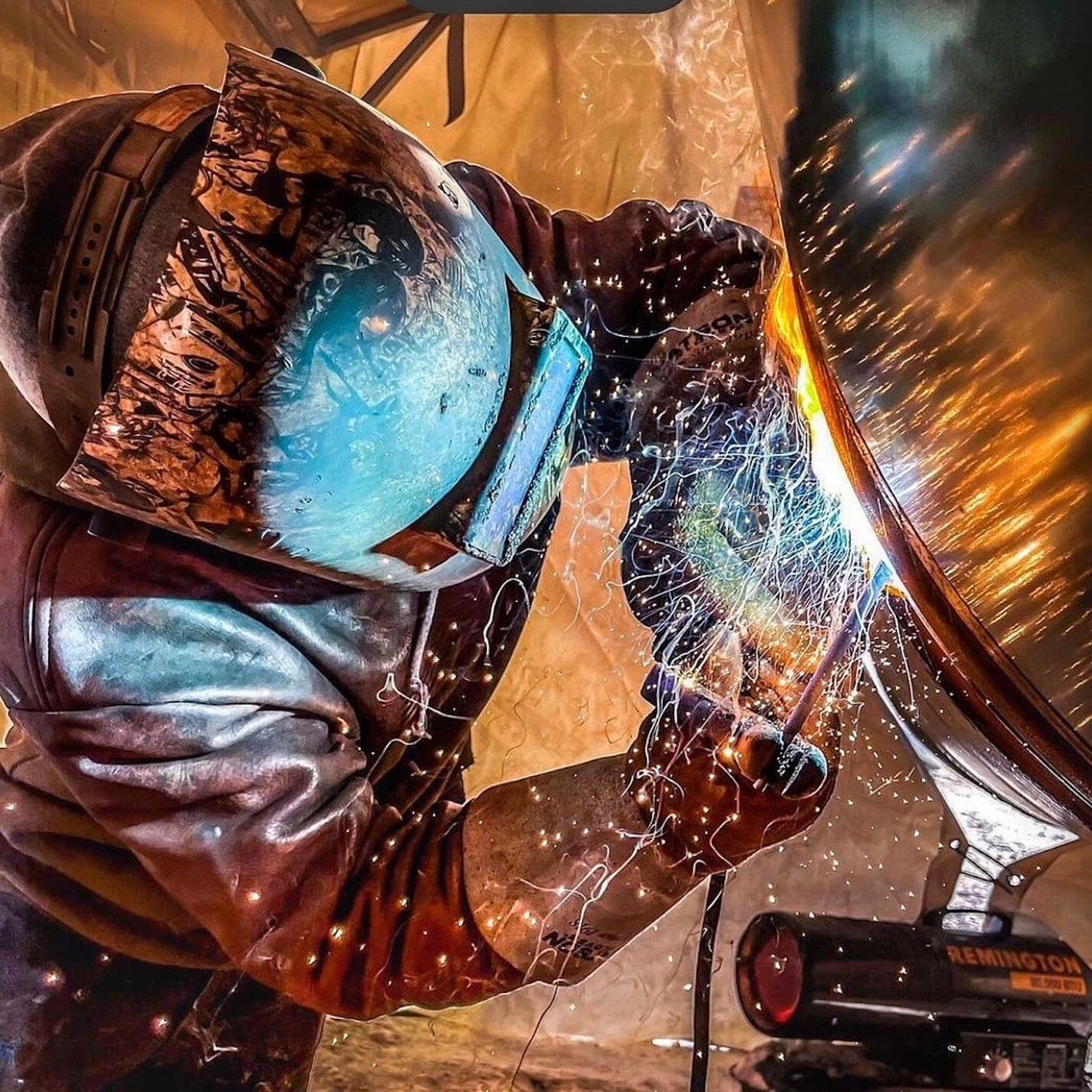Typical Welding Repair Issues and How to Address Them Efficiently
Welding repair services typically run into a variety of issues that can endanger the integrity of the final product. Typical troubles consist of inadequate penetration, porosity, and misalignment, to name a few. Each defect offers unique challenges that require specific strategies for resolution. Understanding these problems is vital for welders aiming to improve their abilities and outcomes. This discussion will discover these usual welding repair work concerns and effective methods to address them.
Poor Infiltration
Insufficient penetration happens when the weld steel falls short to completely fuse with the base material, resulting in weak joints and potential structural failures. This issue usually stems from insufficient warmth input, incorrect electrode angle, or improper welding rate. Welders might come across insufficient penetration due to a miscalculation of the needed criteria for a particular material density or kind. Furthermore, contamination on the base product's surface area can hinder reliable bonding, aggravating the trouble. To resolve inadequate infiltration, welders need to assure appropriate settings on their tools and maintain a clean work surface area. Routine examination of welds is suggested to determine any shortages early, permitting timely adjustments and the prevention of endangered architectural stability in welded settings up.
Porosity
Porosity is a typical issue in welded joints that materializes as little gas bubbles entraped within the weld steel. This defect can compromise the stability of the weld, bring about lowered toughness and possible failure under stress and anxiety. Belgrade Fabrication. Porosity usually arises from contamination, wetness, or inappropriate welding techniques, which allow gases to get away into the liquified weld swimming pool. To attend to porosity, welders must ensure appropriate surface area prep work, preserve a tidy functioning environment, and use ideal welding criteria. Furthermore, choosing the appropriate filler material and protecting gas can mitigate gas entrapment. Normal evaluation and screening of welds can help recognize porosity early, guaranteeing timely restorative activities are taken, thereby preserving the quality and dependability of the welded framework
Misalignment
Misalignment in welding can emerge from different variables, consisting of incorrect arrangement and thermal development. Recognizing the source is essential for reliable resolution. Several adjustment techniques are readily available to realign components and assure structural stability.
Sources of Imbalance
Welding misalignment frequently comes from a selection of underlying concerns that can compromise structural honesty. One primary reason is inappropriate fit-up of components prior to welding, which can bring about gaps and unequal surface areas. Variants in thermal growth throughout the welding process can likewise result in distortion, specifically if the products being joined have different coefficients of growth. Furthermore, inadequate securing and fixturing may stop working to hold components safely in location, bring about activity throughout welding. Badly kept tools, including welding devices and tools, might introduce inconsistencies in the weld bead, further contributing to misalignment. Operator error, stemming from not enough training or experience, can additionally play a considerable function in developing misaligned welds.
Improvement Techniques Readily Available
Addressing misalignment efficiently requires a combination of rehabilitative methods customized to the details concerns at hand. One typical approach is the usage of fixtures or jigs to hold elements in the right placement during welding, ensuring regular placement. In addition, pre-heating the products can help in reducing distortion and boost fit-up. For significant misalignment, mechanical adjustment techniques, such as using hydraulic jacks or clamps, can be utilized to deal with the position prior to welding. Post-weld warm therapy might also be needed to soothe tensions created by imbalance. Cautious assessment and modification during the arrangement phase can protect against imbalance concerns from ending up being significant problems, advertising a smoother welding procedure and enhancing overall architectural stability.
Distortion
Distortion is an usual difficulty in welding that can arise from numerous elements, including uneven cooling and heating. Recognizing the reasons of distortion is crucial for executing reliable prevention strategies. Addressing this problem not only enhances structural integrity yet likewise enhances the total quality of the weld.
Sources of Distortion
When based on the extreme heat of welding, materials commonly go through adjustments that can result in distortion. This sensation mostly occurs from thermal growth and tightening throughout the welding process. As the weld location heats up, the material broadens; upon air conditioning, it acquires, which can develop internal anxieties. Additionally, unequal heating throughout a work surface can exacerbate these stress and anxieties, leading to warping or flexing. The kind of material additionally plays a significant duty; steels with differing thermal conductivity and coefficients of expansion may react differently, causing unforeseeable distortions. Inadequate joint layout and insufficient fixturing can add to imbalance throughout welding, increasing the likelihood of distortion. Comprehending these causes is vital for efficient welding repair and prevention approaches.
Prevention Techniques
Effective prevention methods for distortion during welding concentrate on managing heat input and guaranteeing appropriate joint design. Preserving a regular heat input assists to decrease thermal growth and contraction, which can cause distortion. Making use of methods such as preheating the workpiece can likewise decrease the temperature slope, advertising consistent home heating. Furthermore, picking proper joint layouts, such as T-joints or lap joints, can boost stability and minimize anxiety focus. Applying appropriate fixturing to secure the workpieces in place even more aids in preserving placement throughout the welding process. Finally, staggered welding sequences can distribute heat a lot more evenly, protecting against localized distortion. By applying these methods, welders can greatly decrease the possibility of distortion and enhance the total quality of their welds.
Cracking
Cracking is a common problem experienced in welding repairs, typically arising from various factors such as inappropriate air conditioning prices, material choice, or inadequate joint preparation. The incident of cracks can substantially jeopardize the stability of the weld, resulting in prospective failings during procedure. To address this problem, welders should initially examine the origin, guaranteeing that materials work and appropriately chosen Home Page for the particular application. Furthermore, managing the cooling price throughout the welding procedure is important; fast air conditioning can generate stress and anxiety and bring about fracturing. Proper joint design and prep work likewise contribute to lessening the threat. Executing these strategies can enhance weld top quality and longevity, inevitably reducing the probability of fracturing in completed weldments.

Incomplete Fusion
A considerable issue in welding repair services is insufficient blend, which occurs when the weld metal does not properly bond with the base product or previous weld passes - Montana Mobile Welding and Repair Belgrade Welding. This issue can cause weak points in the joint, possibly endangering the stability of the welded framework. Factors adding to insufficient combination consist of inadequate heat input, improper welding method, and contamination of the surface areas being signed up with. To resolve this concern properly, welders need to ensure appropriate pre-weld cleansing and surface prep work, as well as adjust their welding specifications to attain adequate infiltration and fusion. Normal examination during the welding process can additionally aid determine incomplete fusion early, permitting timely corrective actions to improve the general high quality of the weld
Overheating
While welding repairs can improve architectural honesty, overheating offers a substantial obstacle that can bring about product deterioration. Too much warmth throughout welding can modify the mechanical homes of metals, leading to lowered strength, boosted brittleness, and warping. This sensation is especially crucial in high-stress applications where structural reliability is vital. Identifying getting too hot can entail visual examinations for staining or distortion, along with keeping an eye on temperature level throughout the welding process. To reduce the dangers related to overheating, welders should employ ideal methods, such as regulating heat input, changing traveling speed, and using ideal filler products. Furthermore, applying pre- and post-weld warmth treatments can aid recover material homes and boost the general quality of the fixing, making sure lasting efficiency and security.
Frequently Asked Inquiries
What Are the Usual Indications of a Welding Flaw?

Just How Can I Check My Welds for Top quality?
To test welds for top quality, one can utilize aesthetic inspections, ultrasonic screening, and radiographic methods. Each technique guarantees structural honesty, continue reading this recognizes problems, and verifies adherence to defined requirements, eventually enhancing the integrity of the welded joints.
What Safety and security Preventative Measures Should I Take While Welding?
When welding, one need to prioritize safety by using ideal personal safety equipment, making sure appropriate ventilation, safeguarding combustible materials away, keeping a clean work space, and recognizing surroundings to avoid mishaps and injuries.
Can I Repair a Weld Without Redoing the Entire Joint?
Fixing a weld without renovating the entire joint is feasible, relying on the damage (Montana Mobile Welding and Repair Welding). Strategies such as grinding, including filler product, or utilizing a welding process can efficiently resolve specific defects while preserving the bordering structure
What Devices Are Essential for Efficient Welding Fixes?
Crucial devices for efficient welding repair work include a welding equipment, cord brush, grinder, safety gear, clamps, and filler products. Each device plays a crucial function in making certain high quality and security during the fixing process. Porosity typically occurs from contamination, wetness, or improper welding strategies, which permit gases to run away right into the liquified weld pool. Badly conserved tools, consisting of welding machines and tools, may present variances in the weld bead, more adding my link to misalignment. When subjected to the intense warmth of welding, materials typically undergo modifications that can lead to distortion. Splitting is an usual issue encountered in welding repairs, typically resulting from numerous factors such as improper cooling prices, material option, or inadequate joint preparation. A considerable problem in welding repair services is incomplete combination, which takes place when the weld steel does not appropriately bond with the base product or previous weld passes.
Comments on “Stop welding failures with advice from Montana Mobile Welding and Repair Belgrade Fabrication”